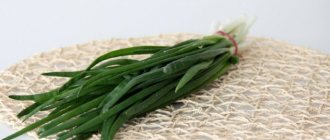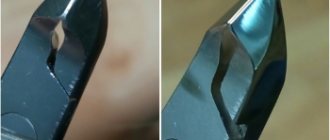Today, the cauldron is no longer an attribute of national cuisine, but an item of ordinary household kitchen utensils. This was facilitated by the fashion for cooking on the grill or according to national motives, as well as the fact that food actually tastes better in it. Again, the popularization of the technology of cooking in thick-walled cast iron or aluminum cookware is doing its job. Everyone wants to cook in a cauldron, but not everyone knows how to handle it. And people are also concerned about the question of how to clean the cauldron so that it is impeccable, and also does not burn in the future after such cleaning. This is what our article is about.
Care Tips
After processing a new cauldron, you must adhere to the rules for caring for it. They are as follows:
- After cooking, it is better to transfer hot food to another container.
- Be sure to thoroughly clean the cast iron from food residues and rinse without detergents.
- Wipe dry and put back in place.
The dishes should not be wet during storage; it is advisable to wipe them with a dry cloth from time to time. When using aggressive detergents, the non-stick properties may be lost, so you can treat the product with oil again. Cast iron cookware is very reliable and if you know how to store the cauldron correctly, it can last forever.
It is important to remember that annealing is useful not only for new cookware. The procedure is recommended if there are burnt food residues on the cauldron.
If abrasive products are used, the dishes must be burned, then a layer of oil must be built up.
How to clean a cauldron at home?
Despite its unattractive appearance, rust, at least in the initial stages of its appearance, will not cause much harm. But, of course, the cauldron needs to be cleaned. How to do this at home? Naturally, with the help of improvised means that are found in almost any home.
Among folk methods, a common vegetable that can be found in every refrigerator is in demand. Raw potatoes do an excellent job of removing a slight rusty coating.
A 1:1 mixture of vinegar and water will help get rid of a thicker layer - immerse the cauldron in it for 3-4 hours. After soaking, mix coarse salt with vegetable oil, and wipe the walls of the dishes with this mixture.
But the most famous method is digestion. It is the most complex, but also universal. Boiling will help get rid of not only rust, but also soot, carbon deposits, and everything that spoils the walls of the dishes. For digestion, a mixture of laundry soap and office glue is used. You need a whole bar of soap, 100 g of glue is enough. All this is dissolved in water, a cauldron is placed in the solution (it needs to be completely immersed), and cooked for about 4 hours over low heat. After such cooking, all carbon deposits and rust can be easily removed with a regular dishwashing sponge.
Is there a lot of rust and has it penetrated deep? Sandpaper and cola will help
Pepsi, Coca - not so important, both drinks contain phosphoric acid, and it is this that eats away rust. Immediately the walls are treated with sandpaper, after cleaning the cauldron is completely immersed in cola, the liquid is brought to a boil and turned off
The dishes are not removed from the cola until it cools down.
After each cleaning method, the cauldron is thoroughly washed with water, wiped with a dry towel and be sure to be calcined with oil.
Rust removal
To clean a cauldron from rust, you will have to put in a lot of effort and time. You need to understand that the surface becomes covered with a red coating when the dishes are not stored correctly. Always wipe down pots before storing them and keep the storage area free of moisture.
Before processing, it is correct to soak the dishes in a solution of vinegar and water (1:1 ratio). Next, use a metal brush to carefully scrape off the plaque. To remove rust manually, you will have to spend a lot of time, so experienced housewives prefer to use improvised means:
- sandpaper with medium and coarse grit;
- grinding apparatus;
- drill with a special attachment.
When using sandpaper, use coarse-grained paper first, and medium-grained sandpaper at the end, processing the plaque with them in turn. Before washing dishes, apply a special rust-corroding agent, following the instructions for use.
Remember, if you do not get rid of rust in time, the dishes may be irrevocably damaged.
Prevention of corrosion and care of a cast iron cauldron
Any utensils need careful and responsible handling. If, after cooking, the cauldron was not washed well, not wiped dry and put in a cupboard, then it is not surprising that rust will soon appear in it.
Do not store the cauldron in a damp place. After washing, the utensils must be thoroughly dried and only then put away for storage.
To prevent this from happening, you must follow a number of rules:
Before the very first use, the cauldron is heated
This makes it stronger, food will not stick to the walls, and it will be easier to clean. After washing the cauldron, you should dry it well with a soft cotton towel, and leave it in the open air for a while to ventilate and dry better. Important: the boiler must be cleaned immediately after cooking. Then you won’t have to deal with dried-on food residues and spoil the surface with harsh shuffles. Do not use aggressive agents or steel wool: they destroy the non-stick layer.
An ordinary kitchen sponge and odorless liquid soap are sufficient for effective care. It is not recommended to pay attention to advertised anti-rust products. All of them contain harmful substances that only worsen the situation. It is much better to use “grandmother’s” remedies. Just emerging, barely noticeable rusty spots can be easily removed with the juice of an onion or raw potato.
Proper storage
To ensure that the cauldron is always clean and does not succumb to corrosion, it must be stored correctly. To do this, after the cauldron is cleaned, wipe it dry. It is better to leave it in the fresh air for a short time so that it ventilates and dries completely. It must be stored in a spacious, dry, closed cabinet so that dust and moisture do not penetrate there. It is best to keep the cast iron lid separate so that it does not damage the coating and do not place other kitchen utensils inside so that water does not leak from them and they do not scratch the surface.
Daily care rules
We can only talk about daily care if the cast iron cookware is used every day
If the housewife has a lot of frying pans, which she uses according to her mood and need, it is important to ensure proper storage of cast iron utensils
Enamel coated
Frying pans and cauldrons coated with a layer of enamel are excellent for cooking and long stewing. The enameled layer adheres firmly to the cast iron, so as not to chip or destroy it, the following care rules should be observed:
- do not place hot dishes under cold water;
- do not clean with powders with abrasive properties;
- after removing the food, pour warm water into a cold dish, add mild soap, leave for 20-60 minutes, wash with a sponge, and dry;
- If the burnt food does not come off, fill the cauldron with water, add liquid soap and a spoonful of soda and boil for several minutes.
Enamel coating requires less maintenance than plain cast iron
It is important not to chip it, not to peel off the burnt remains with a knife, and wait for them to soften in the water on their own. Too aggressive exposure leads to a gradual thinning of the enamel layer, the dishes lose their presentable appearance, but not their properties
Without cover
The main advantage of a cast iron frying pan is the formed oil layer on the surface, which prevents food from burning. When cleaning, the main task is to preserve this impregnation. Therefore, you need to handle cast iron cookware as follows:
- remove food from the pan immediately after cooking;
- do not remove food debris with a knife, abrasives, or metal mesh;
- do not use strong fat solvents for dishes;
- do not soak pans with soap solutions for a long time;
- Do not boil water with soap.
Cast iron is a porous material. The more often you cook in a frying pan, the better it becomes, the walls become shiny. If the frying pan is used regularly, no aggressive chemicals are used when washing, and it is not stored in a damp place, there is no need to lubricate it with oil after wiping.
What will happen to the bars?
This question requires two clear answers: either it is possible or it is not. To give any answer, you need to be completely sure. PMM manufacturers do not recommend washing cast iron cookware in a machine, but not a word is said about cast iron grates. Following simple logic, we draw a simple parallel between cast iron cookware and cast iron grates. It turns out that since the grates are made of cast iron, they cannot be washed.
Somehow everything is unconvincing. Moreover, on the forums housewives swear that they wash cast iron grates in a machine and nothing special happens to them. To form a firm point of view on this issue, we decided to conduct an experiment. In the garage of one of our specialists there was an old, out-of-date Soviet gas stove with a good cast-iron grate. This grate was covered with a thick layer of old fat, but it did not have any external defects. The rack was placed in the dishwasher and the experiment began.
- A Finish capsule was loaded into the tablet compartment.
- An intensive washing program has been activated.
- Upon completion of the wash, the program was restarted and the second capsule was loaded.
We spent almost the whole day running the dishwasher and as a result we saw that the grille began to shine. The layer of fat was completely gone, but a barely noticeable white coating formed on the surface of the cast-iron grate. The next day we put the rack back in the dishwasher and repeated the experiment. At the second stage, our task was to make sure that nothing special would happen to the grille after repeated washings. After the fourth wash, we saw small red spots in several places, these are signs of incipient corrosion.
During the experiment, we invariably used Finish capsules.
Of course, we expected that corrosion might appear, but not so soon. It should be taken into account that before our experiments, the grate served for 30 years in the summer kitchen, and then for another 10 years it lay idle in the garage, and there were no signs of corrosion on it. It turns out that after just 4 washes in the dishwasher, the rack began to rust; you can guess what will happen after 12 washes. The experiment could have been stopped, since it clearly confirmed the point of view of those opposed to washing any cast iron in the PMM.
Ways to get rid of dirt from the grate
We are convinced that you shouldn’t put the grate from a gas stove in the dishwasher, but what should you do with it, because it’s dirty, but you still don’t want to scrub it?
Experienced housewives advise soaking the stove grate overnight in a solution with a high concentration of a fat-breaking agent. For example, Fairy, Anti-fat, Sif and others. Pour the product without sparing, add at least 3 tablespoons per liter of water and shake thoroughly. Place the grill in a suitable container and fill it with a mixture of water and product. Overnight the solution will eat away the grease, and in the morning the grate can be lightly cleaned and it will shine. Practice shows that this method is suitable if the grate is not covered with a thick layer of old fat. If the fat has already turned to stone, then you need a better way.
- Place the grate in a suitable container.
- Fill it with water, to which we previously added 100 ml of vinegar essence per 3 liters of water.
- Leave it overnight, and in the morning carefully clean it with a sponge and a small amount of citric acid.
You can even soak the grate in Radiant Bath, but experience shows that vinegar and lemon juice work better. From now on, try not to use the grille and wash it at least once a week, then you won’t have to put in much effort.
In conclusion, we note that we have seen from our own experience that cast iron grates, after repeated washing in the dishwasher, lose their appearance and become covered with corrosion stains. If you continue to wash the grille in the machine, over time it will all turn brown and begin to smear with rusty dust. If this doesn’t bother you, start washing, maybe the grate won’t crumble into dust. Good luck!
How to store a cast iron cauldron?
The most important thing: it must be dry. Perfectly dry. Never place a wet cauldron in a cabinet; dry it thoroughly. And, of course, do not store dishes in a room with high humidity. Otherwise, rusty spots will quickly cover the walls of the cauldron. You can fight rust, but why do you need the extra trouble if all you need to do is keep the cauldron dry?
Second recommendation: there should be a layer of oil on the walls of the cauldron. Only on internal ones if you use dishes often. Both internal and external, if you are storing the cauldron for a long time.
In the first case, oil is necessary for successful cooking - this way nothing will stick to the walls. Well, in the second case, the oil protects the cast iron from dampness, if it suddenly appears.
Third recommendation: do not store the cauldron without access to air, otherwise it will “suffocate”. After all, there is a layer of oil on the walls and if you close the cauldron with a lid or place a pan on it... The aroma will not be pleasant.
Basically, that's all the recommendations. As for cleaning such dishes, there are also few recommendations. It is advisable to wash the cauldron only with water, without detergents, and even more so, without hard sponges and brushes. Of course, the cauldron should be washed immediately after use, without waiting for food debris to dry to its walls.
If you had to wash the cauldron with detergent or a stiff brush, be sure to ignite it with oil. The same procedure should be carried out after cooking something sour in a container (tomato dishes, stewed cabbage, etc.).
Restoring the non-stick layer
The protective film on the surface may be damaged if you:
- scrape off burnt food with a metal spatula;
- cleaned the surface with a metal sponge or a stiff brush;
- Use any detergent that can dissolve fat for washing.
In such cases, you will need to restore the natural non-stick layer. To do this, after washing, lubricate all the inner walls of the container with vegetable oil or chicken fat, and then heat the cauldron on the stove for 20 minutes. The oil will heat up and penetrate the metal structure. As a result, an oily protective film forms on the surface, preventing food from burning or sticking.
If you later wash the cauldron, damaging the natural non-stick layer, it will need to be restored again.
How to clean a cast iron cauldron
A cast iron cauldron can suffer not only from soot and soot. Sometimes, due to improper handling or care, rust, mold or scale appears on the surface. To remove them, use only suitable means and follow a certain sequence of actions.
From rust
First of all, determine the extent of damage to the surface.
If there are very few corroded areas, use chemicals with abrasive particles and a metal sponge. Rub small rust lesions with half a potato. After all manipulations, rinse the cauldron under running water.
If there is a large layer of rust, first try cleaning the area with detergent. After this, scrub the surface with sandpaper or metal shavings. Use both large abrasives to remove the top layer of rust, and small ones to clean microscopic pores on the surface. You can also remove a thick layer of corrosion using a drill with a flat attachment or a grinder.
Please note that only a specially trained person can work with such tools.
If you don’t have household chemicals or tools at hand, try boiling the cauldron in boiling water with salt. To do this, place the container in a bucket and fill it with water, add salt at the rate of 1 kg per 6 liters of liquid. Place the bucket on the stove and boil the dishes for 7–8 hours.
From scale
If scale has formed on the surface of the cauldron, try removing it with a special kitchen product. Among the available means, citric acid, vinegar and hydrogen peroxide work well against scale. Take enough cleaning agent to cover the entire volume of the container.
From mold
Of course, it is better to prevent mold from occurring. To do this, it is enough to wipe the container dry after each wash. If an unpleasant fungus does appear on the surface, the cauldron will have to be heated on the stove, fire or in the oven.
Calcination of a new cast iron cauldron
Cast iron is a material that is made by pressing or casting an iron alloy. The composition contains a small percentage of carbon, which leads to corrosion over time. To prevent this from happening, the dishes are treated with technical oil during production. Before first use, industrial grease must be removed by baking. It is performed once after purchasing the dishes.
You can remove the oil coating using salt. If the event is taking place in an apartment, it is recommended to ventilate the room, as sufficient smoke will be generated. Salt is poured into the cauldron and the stove is turned on. Stir the salt periodically and wait until it turns brown. Then it is removed and the walls of the container are wiped with paper. Proceed to the second stage of processing.
A cast iron cauldron is greased with sunflower oil so that the walls inside are saturated and a film is formed. It protects food from burning and sticking. Sunflower oil is poured into the cauldron and the dishes are heated. Animal fat is suitable for lubricating the walls. It is optimal to use linseed oil; it quickly clogs the pores of the metal, forming a thin film on the surface. Warm up the container with oil for half an hour. Next, turn off the stove, cool the cauldron, and wipe the walls with a clean rag. Afterwards, the dishes are ready for cooking.
Preparation and use
After purchase, a cast iron cauldron, like a frying pan, cannot be used immediately. You need to bake the pan to remove any remaining machine oil and create a non-stick layer. First you need to wash the container on each side with warm water, wipe it and heat it on the stove. When the smoke stops, pour in 0.4-0.7 liters of vegetable oil and reduce the heat.
Rotate the cauldron so that the oil gets on the walls and is evenly distributed inside. Perform the procedure when the surface becomes slightly reddish, but not completely red. Then cool the dishes, drain the oil and wash them in warm water without soap or other products. When the water has drained, wipe with a dry, clean cloth or paper towel. For more information on how to season cast iron cookware, see here.
To cook in a cauldron, you need to follow several principles. First you need to render the fat (lard) or vegetable oil. Then the onion is thrown in and fried until it turns bronze. It draws out unpleasant odors from cast iron. After frying, remove the onion and prepare the desired dish.
The first manipulations, namely frying, are performed over high heat. Then add spices and other ingredients, which are simmered under the lid and over low heat for quite a long time. This principle is suitable for preparing any dishes. In order for the cookware to serve for a long time and retain its original properties and appearance, you need to properly care for the cast iron cauldron.
Video
Watch the video on the topic of the article:
In the past, she was a successful lawyer who radically changed her lifestyle. In the new role of wife and mother, the ability to highlight the main thing and “put everything in order” has remained unchanged. I am always ready to share my discoveries and accumulated experience.
Found a mistake? Select the text with the mouse and click:
If your favorite things show the first signs of gestation in the form of untidy pellets, you can get rid of them using a special machine - a shaver. It quickly and effectively shaves off clumps of fabric fibers and returns things to their proper appearance.
Before removing various stains from clothing, you need to find out how safe the selected solvent is for the fabric itself. It is applied in a small amount to an inconspicuous area of the item from the inside out for 5-10 minutes. If the material retains its structure and color, you can move on to stains.
Threads made of gold and silver, which were used to embroider clothes in the old days, are called gimp. To obtain them, the metal wire was pulled for a long time with pliers to the required fineness. This is where the expression “to drag out the rigmarole” came from - “to do long, monotonous work” or “to delay the completion of a task.”
The easiest way to remove scale and carbon deposits from the soleplate of the iron is with table salt. Pour a thick layer of salt onto the paper, heat the iron to maximum and run the iron over the salt bed several times, applying light pressure.
There are special traps to combat moths. The sticky layer with which they are covered contains female pheromones that attract males. By sticking to the trap, they are eliminated from the reproduction process, which leads to a decrease in the moth population.
The dishwasher cleans more than just plates and cups. You can load it with plastic toys, glass lamp shades and even dirty vegetables, such as potatoes, but only without using detergents.
Fresh lemon is not only suitable for tea: clean dirt from the surface of an acrylic bath by rubbing with half a cut citrus, or quickly wash the microwave by placing a container of water and lemon slices in it for 8-10 minutes at maximum power. The softened dirt can simply be wiped off with a sponge.
The habit of using an automatic washing machine “sparingly” can lead to the appearance of an unpleasant odor in it. Washing at temperatures below 60℃ and short rinses allow fungi and bacteria from dirty clothes to remain on internal surfaces and actively multiply.
Stretch ceilings made of PVC film can withstand from 70 to 120 liters of water per 1 m2 of their area (depending on the size of the ceiling, the degree of its tension and the quality of the film). So you don’t have to worry about leaks from neighbors above.
In what cases can cast iron still be washed in the dishwasher?
In the modern world, manufacturers of cast iron products try to keep up with technological progress and develop utensils that can withstand washing in the dishwasher. Usually the metal is covered with enamel, less often with more technologically advanced protective layers.
Look at the bottom of the dish or the instructions: there should be an icon saying whether this item can be washed in the dishwasher.
Cast iron cookware can last a really long time if you don't use too strong detergents and don't put it in the dishwasher.
How to care for a cast iron cauldron
If you properly care for a cast iron cauldron, process it, use it properly and store it, it will last for decades.
If you just bought a cauldron, then it needs to be processed, this must be done. A new pot in production is lubricated with machine oil in order to protect it from rust; to remove the layer of oil, the dishes must be fired over an open fire. It is advisable to do this not indoors, as there will be smoke and an unpleasant odor.
After calcination, the cauldron must be rinsed with warm water. Now let's start calcining, take the simplest and cheapest refined oil 1-1.5 liters, pour it into a container and put it on high heat. In order for the cauldron to be completely calcined, its sides must be periodically poured with oil. It’s even better to tilt the pan on its side and slowly turn it so that the oil flows around all the walls.
Be careful not to spill oil on yourself. The procedure may take from 30 minutes to an hour
When the cauldron has cooled, pour out the oil, rinse the dishes thoroughly with water and use a soft sponge. In this way, we create a protective layer that not only protects the cauldron from rust, but also from food burning.
To ensure maximum protection, coat the cauldron with oil using a cloth and put it back on the fire, wait until the oil burns out, and do this several times.
If you cook dishes in oil, the protective layer will be strengthened, but if you stew vegetables with tomatoes, cook cabbage rolls, or meat in wine, then the protective layer will be destroyed. In order to properly care for a cast iron cauldron, the calcination procedure will have to be repeated periodically.
You should not leave the cauldron with food leftovers; you need to wash it immediately and without using chemicals, as they destroy the protective film. If the food is burnt, pour water into the bowl and put it on the fire for 10-15 minutes. After washing, the cauldron must be wiped dry and greased with sunflower oil.
Cast iron cookware must be stored in a dry place, as moisture can cause rust. If it appears, then the rusty coating must be removed and the calcination procedure must be repeated.
What are the dangers of automatic cleaning?
Cast iron, like any material, has a number of unique properties that must be taken into account when caring:
- cast iron is a dense alloy with an imperfectly smooth surface, in the unevenness of which oil, as well as household chemicals, is well fixed;
- after calcination, cast iron is covered with a thin film that protects it from rust and prevents food from burning;
- unheated metal is very vulnerable to rust;
- Cast iron is very hard and is not afraid of iron brushes.
It is common to think that cast iron products are absolutely unpretentious, and they “don’t care about anything,” but this is a deceptive impression. First of all, it is very hard, but fragile, and a strong blow will not bend, but rather split the dishes. When regularly washed in PMM, cast iron becomes riddled with microcracks, which accelerate the date of destruction of the cookware.
Secondly, cast iron rusts quite easily if it is not covered with enamel or if the oil film is destroyed. And the latter corrodes quite easily. How it works: the dishwasher uses a strong alkali in the cleaning agent, and it is supplied with a stream of hot water. These factors soften and wash off the film. Then the dishes are “dried”, but remain in a damp chamber for half an hour, or even several hours. As a result, the cauldron or frying pan rusts.
Thirdly, alkali very successfully clogs the pores of cast iron and then moves onto the food, and when heated it also poisons the air.
Advice from “Miss Clean” Rust on cast iron or any other utensils should be removed immediately. This can be done in the following way: rinse thoroughly with water and the hard side of a sponge or scrape off with a metal brush. Then you need to restore the protective layer: grease the work surface with oil and warm it up.
How to heat a cast iron cauldron at home
If you bought a new cast iron cauldron, do not rush to put it on the stove, filling it with ingredients according to the recipe. First it needs to be heated over fire.
Otherwise, when cooking, everything in it will burn, stick, and even be saturated with the smell of machine oil, which is used to treat products when they are sent from the factory to warehouses so that they do not rust. One can only imagine how many curses you'll utter as you scrape up the remains of spoiled food.
Of course, you won’t spoil the cauldron itself. Cast iron cookware is the kind of thing that is only afraid of falling from a great height, because the metal is fragile. Yes, humidity, because it rusts mercilessly.
Therefore, it is better to spend a certain amount of time and effort to prepare the purchase for a long and almost eternal service. The secret to the deliciousness of food cooked in cast iron cookware with natural non-stick film and thick walls.
Non-stick qualities are obtained due to fats and oils that are used during cooking. When it heats up, it eats into the pores of the metal so firmly that it produces a very durable, smooth coating that prevents burning.
All products simmer evenly and slowly. This quality is ensured by thick walls. The heated metal slowly and evenly transfers heat to the products. Both pilaf and porridge turn out especially tasty. Such food is useful even for those who suffer from stomach problems and are forced to give up fried and fatty foods.
So, in order for the cauldron to serve forever and the pilaf to always turn out amber and aromatic, you will have to work hard to calcinate it. Without this procedure, a natural non-stick film will not form and food will stick to the walls of the pan.
Calcination of a cast iron cauldron is carried out in two stages. But only once - before the first use, if you bought a new vessel.
How to wash a cauldron after cooking
Dishes made of porous alloys do not like aggressive cleaning. The pores become clogged with detergent; the surface will have to be rinsed with running water for a long time. The oily non-stick layer is destroyed.
How to wash a cauldron? After cooking, food is placed in another container; it cannot be stored in porous metal; the dishes will acquire an unpleasant odor. After pilaf and other dishes that are well steamed, it is enough to remove any remaining food from the vessel. After this, just wash the utensils with warm water without detergents and wipe well. If this method fails to achieve the expected result, pour water into a massive utensil to 1/3 of the depth, bring to a boil, cover with a lid. All particles of fat can then be easily removed with a foam sponge.
To wash an aluminum cauldron, you can use ordinary dishwashing detergents that do not contain aggressive acids and alkalis.
Aluminum utensils are easier to clean. To wash it, you can use ordinary dishwashing detergents that do not contain aggressive acids and alkalis. Previously, the burnt areas are lubricated from the inside with a paste of salt or mustard powder. The outside of a cauldron used on an open fire is cleaned of soot using traditional methods:
- River sand with grass;
- Coarse salt;
- Ash.
At home, the cauldron is pre-soaked in a soapy solution and completely immersed in a large container. After this, clean well under hot water, rinse, and wipe dry.
It is best to wash a cast iron cauldron with hot water without soap.
How to wash a cast iron cauldron? Hot water without soap is best. If it is not possible to remove all contaminants with water, the correct method of cleaning cast iron involves gentle washing while preserving the oily protective layer:
- Mild detergents;
- Dry mustard;
- Soda.
It is necessary to restore the anti-corrosion layer after washing - just wipe the inside of the cauldron with an oiled napkin or cloth.
With proper care, the cauldron will last for years.
It is important to protect the vessel from excess moisture: rust stains form on cast iron; Harmful fungi multiply on the aluminum surface. For long-term storage, it is better to wrap the vessel in cotton or linen cloth
With proper care, the cauldron will last for years. Which dishes to choose is up to everyone to decide for themselves. Aluminum utensils are lighter than cast iron. You can take it with you outdoors. Cast iron retains heat longer, food simmers in it and becomes tasty. You learned how to clean a cauldron quickly and correctly. Take care of your dishes by following our tips and delight your loved ones with delicious pilaf and other dishes!
Daily care of the cauldron
How to care for a cast iron cauldron? The non-stick properties of cast iron have been known since ancient times.
If your cast iron burnt food:
- Pour some water into it, add 2 tablespoons of salt and soda and put on fire.
- Boil this solution over medium heat for 20-30 minutes, then mix and let the dishes cool.
- Then you can easily wash the dishes with a soft sponge.
How to get rid of carbon deposits?
What to do if carbon deposits appear on the bottom and walls of the dishes. To cope with this problem, you will need a large basin in which you can boil the cauldron, and also prepare the following mixture:
- water;
- bottle of silicate glue;
- grated laundry soap.
Dissolve both components in hot water and place your cauldron in the solution. Place on low heat and boil for an hour. Then clean it with a sponge and dry it.
Cleaning a cauldron from carbon deposits using household chemicals
To clean a cast iron cauldron, you can use a lye-based oven cleaner. The label should indicate that the composition contains sodium hydroxide.
Application:
- Apply the paste, lightly rub it into the surface with a sponge and leave for 10 minutes.
- After the specified time has passed, wipe off all carbon deposits from the dishes, wash thoroughly with soapy water, and then rinse with clean water.
- In order to neutralize all chemicals, rinse the surface of the cauldron with table vinegar.
- Wipe dry and carry out the calcination procedure with oil.
How to get rid of odors?
Cast iron has one drawback - it absorbs various odors well. If you have prepared a dish with a specific smell, it may remain during subsequent preparations.
You can easily get rid of the smell as follows:
- Place the cauldron on high heat.
- Pour about a kilogram of salt into it and heat it for 30-40 minutes.
- Stir the salt regularly and distribute it along the walls of the dish. Salt absorbs odors and removes soot.
- Let the cast iron cool, pour salt out of it and wipe the inside surface with a napkin.
- Then grease the dishes with vegetable oil and reheat.
Method number 1. Folk remedies
The method is suitable for a cauldron made of aluminum or other types of metal. There are several options for implementing this method. You can pour water into a cauldron, put it on the stove and boil. In this case, the inside will be cleaned.
If you need to get rid of carbon deposits from the outside, place the cauldron in a common container, fill it with water and boil it with one of the selected products. The second method is suitable for people who regularly use a cauldron for cooking over a fire.
Products that need to be added to water:
- Soda with vinegar.
Mix 250-260 ml. table vinegar with 60 gr. table salt and 40 gr. baking soda. Place this mixture in boiling water, then immediately reduce the heat on the stove to low. Boil the cauldron until soot and fat begin to peel off from its surface. Then turn off the stove, let the liquid cool, and proceed to direct cleaning with a sponge. - Dishwashing gel.
One of the easiest to implement and effective means. You just need to mix dishwashing gel with half a grated bar of laundry soap. This composition must be poured into boiling water and the cauldron simmered for about half an hour. After the expiration date, turn off the burner, let the liquid cool and begin cleaning effortlessly. - Soda, glue, soap.
This composition has long been used to clean stubborn fat and carbon deposits. Don’t pay attention to such ambiguous components; nothing bad will happen to the dishes. For one bucket, take 0.5 kg. baking soda, 2 pieces of household soap, 0.1 l. silicate glue (can be replaced with PVA). Send this composition into boiling water along with a cauldron, wait half an hour. - Citric acid powder.
The cleaning method will not require you to spend a lot of money; lemon powder can be purchased in every store. For 1 l. You will need about 40 grams of boiling water. citric acid. Simmer the cauldron in this mixture for about half an hour, then carry out the usual procedure for removing carbon deposits using a sponge.











